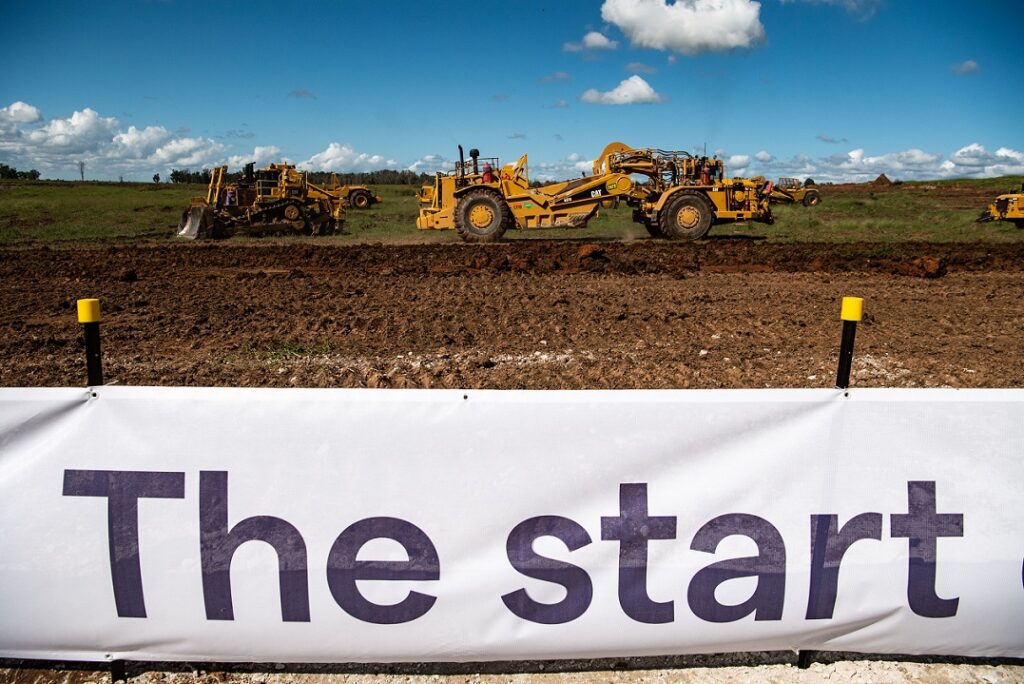
Some of the world’s biggest machines ate among 200 rolling onto the Western Sydney Airport site as the next phase of work begins on one of the largest earthmoving challenges in Australian history.
Western Sydney Airport executive general manager of airport infrastructure Jim Tragotsalos said major earthworks will see around 25 million cubic metres of earth moved to make way for construction of the Western Sydney International (Nancy-Bird Walton) Airport terminal, runway, roads and rail.
“This is an exciting day not just for Western Sydney, but for the nation, as this transformational project marks its biggest milestone yet,” Mr Tragotsalos said.
“In total, we’re moving enough earth to fill around 10,000 Olympic swimming pools.”
Since initial earthworks marked the start of work to build Western Sydney International in September 2018, around one million worker hours have been racked up on the project and 1.8 million cubic metres of earth moved around the site.
Initial earthworks also involved realigning 1.6 kilometres of Badgerys Creek Road, which will become one of the gateways to the Airport when it opens in 2026.
“On other projects these achievements would be showstoppers, but for Western Sydney International initial earthworks was just the beginning, covering only six percent of the 1,780-hectare site,” Mr Tragotsalos said.
“Major earthworks will see us moving up to 1 million cubic metres of earth a month, working across 67 percent of the site, which is the entire footprint of the first stage of the Airport.
“We’ll have hundreds of workers and more than 200 scrapers, excavators, graders, dump trucks and dozers on site – including some of the world’s biggest machines – getting to work on this mammoth task.
“We need to flatten what is a very hilly site – the difference between the highest and lowest points is equivalent to a 12-storey building – so we definitely have our work cut out for us.”
At least 30 per cent of jobs during the construction phase of Western Sydney International will go to Western Sydney locals, with that figure increasing to 50 per cent when the Airport opens.
The project will also support upskilling and training of local workers, with at least 20 per cent of jobs reserved for apprentices, trainees and other learning workers.
Market soundings have also commenced for more job-creating contracts including construction of the terminal precinct, runway and taxiways and internal roads.
